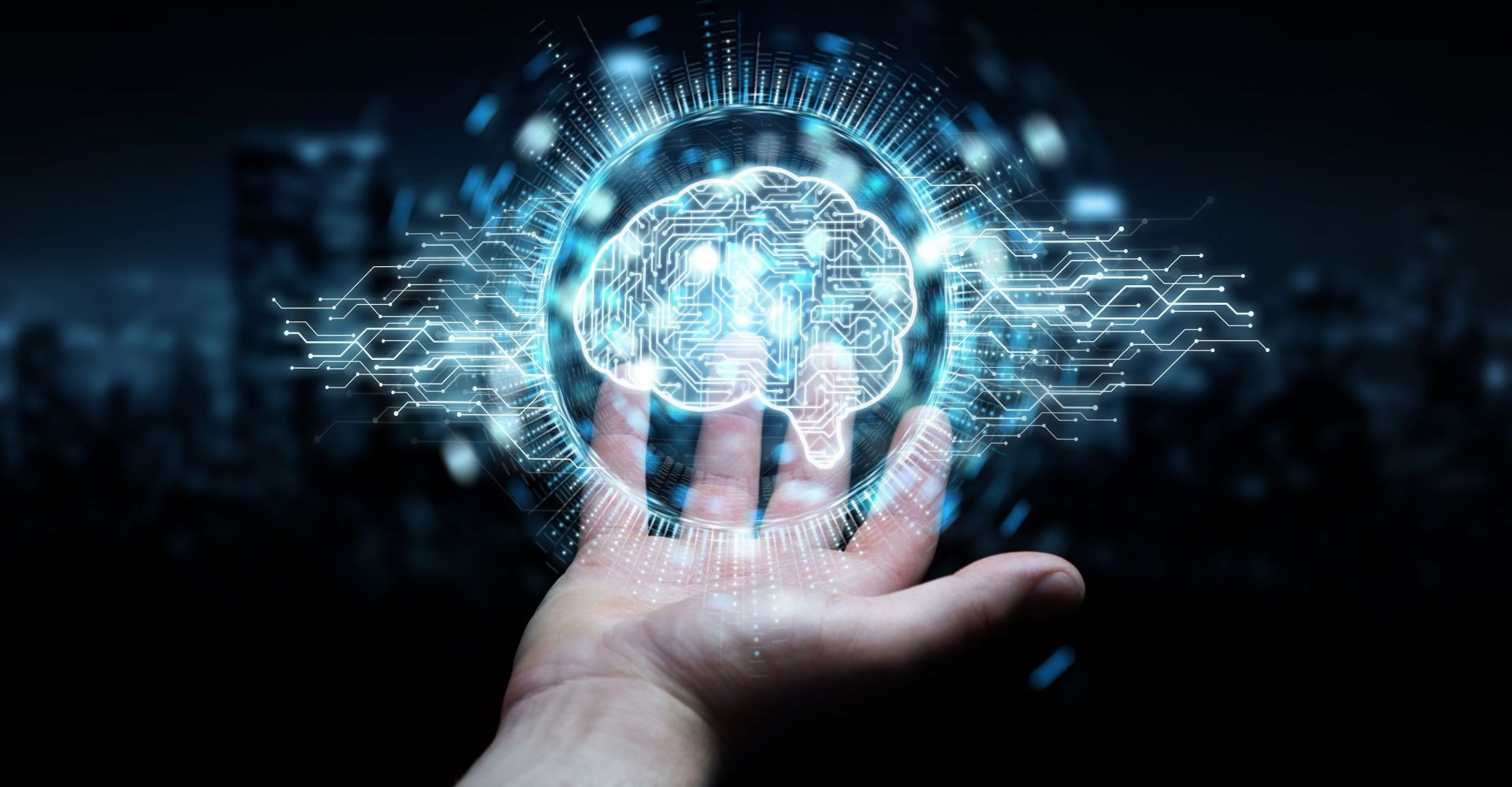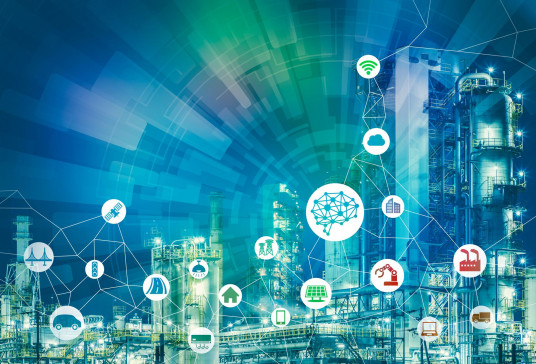Embracing AI in the Post-COVID World
The coronavirus (COVID-19) pandemic is the black swan event of a lifetime. It has shocked the world, upended industries, nearly broken several countries’ health infrastructure, and brought economies to a grinding halt.
Travel restrictions and lockdowns have subdued demand across transportation, energy, and retail, among other verticals, while stalled production in China and Europe has disrupted supply chains around the world and increased uncertainty about the future of the global economy.
Following the pandemic, many industries will, without a doubt, look entirely different from what they were before. New challenges and opportunities will surface, and questions previously overlooked will now demand answers. Artificial Intelligence (AI), a technology which was in the nascent stages of adoption in industrial verticals, will lay the foundation for significant investments in digitization and automation in the post-COVID world.
“Following the pandemic, many industries will, without a doubt, look entirely different from what they were before.”
An AI Framework to Optimize Assets, Improve Processes, and Benefit Humans
Over the past several years, AI combined with IoT has led the charge in driving greater efficiencies across many industries. And yet, despite the significant promise of the technology, many organizations have not developed strategies and critical skills to fully realize the value of AI at scale. Many business leaders who prioritized solving other problems with a short-term results horizon failed to make long-term investments in preparing for the impending automation revolution.
The disruption of the pandemic, however, has forced organizations to rethink their digital transformation approach and accelerate the adoption of AI applications. As great uncertainty around the economy’s recovery and available capital for growth and expansion looms, businesses will increasingly look to AI-led automation to drive more value from their existing applications.
AI also has the potential to create new business models and applications that will profoundly change the way people live and work post-COVID. Cisco Investments and McRock Capital created the below framework to illustrate how AI can optimize assets, improve processes, and enhance human capabilities through a mix of existing and emerging applications.

“AI-enabled software tools have proven their value in augmenting human capabilities to improve productivity and optimize workflows.”
AI Supercharging Existing Applications
The Augmented Industrial Worker
Improvise and adapt to overcome short-term disruptionsThe advent of digital technology has already shifted much of the physical work to digital. AI-based technologies had become quite pervasive prior to the COVID-19 pandemic; the disruption caused by such event, however, has further expedited the adoption of AI in the workplace.
Keeping frontline workers safe: As factories, warehouses, and other work sites re-open, many are looking to use AI-based solutions to safeguard workers’ health. Some of the safety applications include alerting management and workers in real time to potential safety hazards as well as ensuring employees are wearing face masks and other protective equipment, adhering to social distancing guidelines, and receiving skin temperature checks through advanced thermal imagery.
Accomplishing more with fewer resources through AI-driven analytics:While there are arguments to be made around AI’s negative impact on the global job market, the pandemic caused a decrease in human workforce overnight and made AI more appealing. AI-enabled software tools have proven their value in augmenting human capabilities to improve productivity and optimize workflows. Specialized jobs, in particular, benefit from machine learning algorithms that identify trends and insights in vast reams of data and enable faster decision-making.
One case in point, ThoughtTrace, a McRock portfolio company, has developed an AI-powered Document Intelligence platform that delivers rich, contextual insights for complex documents and contracts. Using advanced Natural Language Processing (NLP) techniques, the solution maintains a human-like understanding of unstructured document data, giving customers an enhanced view of their repositories and extensive insight into their complex contract data to drive actionable business value.
A shift in workforce foundationAs a remote and virtual work model reshapes the “new normal,” technologies such as AI will become the major driving force to reimagine the future of work across different industries.
Industrial worker collaboration:Many experts expect a major rise in adoption of AI-enabled connected technologies for the industrial workforce, some of which is shifting permanently to remote-based operations. Connected Worker and Augmented Reality solutions that enable remote operations and collaboration will benefit from this trend.
Upskill, a Cisco Investments portfolio company, is pioneering this movement through its software platform by delivering enterprise apps for industrial workers on smart glasses, smartphones, tablets, and augmented reality devices. Their solution enables workers to receive complex assembly instructions, perform tasks faster, make fewer mistakes, avoid accidents, get remote assistance, and update systems of record in real time, all of which enables industrial customers to do more with constrained human capital.
Powering actionable knowledge-sharing and creation remotely within the workforce: The amount of knowledge that needs to be managed and distributed increases exponentially as organizations grow. AI allows the system to automatically surface the right information at the right time to people in need. The use of AI helps employees discover useful resources they did not even know existed and connect people to the right subject matter experts in the company. As COVID-19 continues to alter the workforce structure, effective knowledge sharing within or across companies will assume a significant role in creating competitive advantages and improving positive business outcomes for industrial organizations.
Using a data-driven approach for workforce segmentation: According to Forbes, one of the key trends shaping the human capital market is the perspective to treat individual employees uniquely, particularly with respect to their workplace contributions. The post-COVID remote work era calls for assessing employees’ skills, strengths, and contributions and empowering them with a tailored approach (remotely), which AI-driven classification and segmentation tools could address. Organizations have started using NLP and predictive modeling to look at internal and external data on critical and growth skills, talent movement, and role adjacencies to inform talent investments. Leveraging the power of AI analytics will shed light into organization’s hidden potential and drive meaningful insights for talent retainment, reskilling, and upskilling of the workforce, as well as cultivating a culture of diversity and inclusion.
“The post-COVID remote work era calls for assessing employees’ skills, strengths, and contributions and empowering them with a tailored approach (remotely), which AI-driven classification and segmentation tools could address.”
Extended Health and Safety of Industrial Assets
Predictive/prescriptive maintenance:Advances in AI and data analytics continue to push prescriptive maintenance forward in generating predictions and recommendations regarding asset failures. New players continue to emerge in different parts of the stack, from sensors to platforms and applications, with successful vendors being able to convert customer data as-is from the source into actionable insights from Day One.
Praemo, a McRock portfolio company, is among those whose mission is to transform asset maintenance through AI analytics. The company combines industry expertise with advanced machine learning algorithms to automatically create out-of-the-box actionable recommendations on potential equipment failures and process optimization.
As the definition of assets expands, the topic of asset data itself has become more than just about the technology. What will set successful businesses apart in a post-COVID world will be their ability to manage data as an asset across the whole organization. Integrating, correlating, and contextualizing information from different systems is key to delivering insights and creating competitive advantages for enterprises. In addition to the big players in the asset optimization space such as Aspentech, emerging startups have begun to offer unified data repositories that allow consistent management of data at scale.
Physical security: The challenge of protecting facilities and assets from afar has become even more daunting as the majority of the workforce shifts to remote operation. AI technologies such as computer vision, pattern matching, and predictive analytics continue to advance, with governments, enterprises, and individuals applying this technology to video surveillance and physical access control. In addition to cameras with limited field of vision, organizations have started using drones to guard perimeters of critical production facilities.
“Integrating, correlating, and contextualizing information from different systems is key to delivering insights and creating competitive advantages for enterprises.”
Best Practices for Maintaining a Strong Supply Chain
Product quality control/inspection:COVID-19 has created a severe impact on the supply chain, causing industrial companies, especially those in manufacturing, to face new constraints in resources while maintaining product quality to mitigate losses. Such pressure will accelerate the adoption of AI in automated quality inspection. Computer vision, for instance, uses cameras to scan the device or part under test for catastrophic failure and/or quality defects. Semi-supervised machine learning then classifies images into various failure classes. AI is also used to analyze other sensor data in time series format for ensuring quality of manufacturing output.
AI analytics for demand forecasting:Demand planning serves as the starting point for many other activities across the supply chain, such as shipping, warehousing, pricing, and especially, supply planning. Demand forecasting systems have been around for decades, but they are vulnerable to large-scale disruption, such as the COVID-19 pandemic. As the requirement for high accuracy predictions becomes more critical than ever, AI solutions can help upgrade statistical models according to the current reality. For instance, AI techniques like NLP allow the systems to add and analyze new data points, such as human behavior, including those from media platforms and conversations, to detect and predict people’s preferences, choices, or sentiment.
AI analytics for logistic operations visibility:Building a resilient supply chain in an uncertain post-COVID world requires greater visibility into every part of logistics operations. Solutions that integrate various sources of data such as weather, social media, border crossing times based on time of day and day of the week, inventory level, and other relevant information can provide advanced warning to a facility when a shipment is delayed, for example. The system can then use AI analytics to lower the risk of supply chain disruptions by continuously recommending resolutions that help avoid bottlenecks and notify customers regarding potential changes or delays.
“The applications of RL will unburden the human operator from having to pre-program accurate behaviors, allowing organizations to implement flexible and responsive robotics and industrial automation systems adaptively in a broader range of unstructured and unknown environments and use cases.”
Emerging Applications: What’s on the Horizon?
Innovations in AI algorithms and frameworks are spawning new applications of AI. One such promising technique is reinforcement learning (RL), a deep learning technique that enables an agent to learn in an interactive environment by trial and error using feedback from its own actions and experiences. The goal of RL is to find a suitable action model that maximizes the total cumulative reward of the agent. Over the next decade, reinforcement learning is expected to fuel the growth of emerging real-world AI applications.
Moving from industrial automation to autonomy: AI will catalyze paradigm shift from connecting assets & processes and performing descriptive and predictive analyses to adoption of adaptive, self-optimizing systems in the post-COVID world. RL is an ideal solution to use when an organization is grappling with real-world challenges in automating existing processes. RL enables a robot to autonomously discover an optimal behavior through trial-and-error interactions with its environment, such as picking an object from a box and placing it in a container a la FANUC. Even if it fails, it learns from the experience and improves subsequently.
Other applications of RL in industrial world include process and machine calibration, intelligent control systems design for traffic lights in smart cities and HVAC systems in energy-efficient buildings, and autonomous systems development for mining and drilling operations. The applications of RL will unburden the human operator from having to pre-program accurate behaviors, allowing organizations to implement flexible and responsive automation and autonomous systems in a broad range of unstructured and unknown environments and use cases.
Adaptive inventory management and delivery optimization: Typically, different actors within a supply chain, namely suppliers, manufacturers, and distributors, have different inventory policies. Reinforcement learning algorithms can be deployed to reduce transit time for stocking as well as retrieving products in the warehouse. RL can even optimize deliveries by serving several customers with one vehicle.
“Successful AI companies are those who develop effective frameworks that enable them to proactively keep up with data advantages through constant analysis of data distribution, impact of data on product finetuning, as well as the trade-off between volume and quality.”
Scaling AI Startups
With the potential to unlock massive value, the AI market is teeming with startups as well as incumbent technology vendors’ solutions. The market, however, lacks a robust framework for customers to compare and choose AI solutions most relevant to their needs, which makes it challenging for startups to stand out in this burgeoning, noisy market. We have some thoughts on how AI startups can compete and scale.
Product and Talent
Large and proprietary data training sets coupled with a thoughtful data strategy:
Data is the new oil that will help AI systems bolster their efficiency over time. However, long-term competitive moats won’t be created through data collection alone. Successful AI companies are those who develop effective frameworks that enable them to proactively keep up with data advantages through constant analysis of data distribution, impact of data on product finetuning, as well as the trade-off between volume and quality.
A consistent pool of talent around applied AI:
While there are conflicting reports about the number of people who actually make up the AI talent pool (between 10,000 and 300,000 globally), experts agree that “AI builders” are the most sought-after professionals when it comes to companies striving to fill their AI skills gap. Winners in this space are those who can recruit and retain AI talent through a culture of growth, not just compensation. In a competitive market for AI talent, a diverse and inclusive workplace is key to attracting exceptional talent and broadening an organization’s perspective.
Domain knowledge that provides deep insights into opportunities within a sector:
Companies with combined expertise in data science and machine learning as well as industrial domain can help customers solve critical business problems and build a good rapport through customer support. Intelligent customers are especially adept at catching lack of information, misdirection, or ineffective communication. An organization's in-depth knowledge of every aspect it handles will not only separate it from its competition, it will also impress upon the customer that the said organization is best suited to tackle the problem at hand.
Know and reign in direct costs:
AI companies are believed to have lower gross margins than other SaaS businesses, due to heavy cloud infrastructure usage and continuous human-in-the-loop requirements. Economies of scale can only increase the margins slightly. Smart approaches around efficiently using training data and compute as well as unique pricing models, in which customers share cloud and human support costs, could help lower the expenses.
AI-enabled hardware–understand your supply chain:
For those building robotics and other smart hardware solutions, the challenge of building a competitive physical product adds to the complexity of scaling. We believe the key to succeed is to focus on building only the key new features that deliver the proprietary value and leverage off-the-shelf components. Understanding the pros and cons of various options for the supply chain can help lower potential risks related to IP defensibility, working capital, and production disruptions.
Take advantage of services:
For AI startups that provide complex enterprise solutions, having a services component is critical on multiple fronts. Deploying a well-established service strategy enables new AI vendors to learn about the real customers’ pain points early on, gather relevant data for model development and fine-tuning, enhance their product’s features, and ensure stickiness of the product down the road.
“As most executives and corporate buyers are not typically fluent in AI, startups need to be 'bilingual' and provide context on why a certain technology can help drive a business forward—by impacting revenues, efficiency, and customer service.”
Go-To-Market
Focus on high-value problems:To gain the attention of high-level decision makers, AI solutions must address critical problems that affect the organization’s greater performance and financial outcome. Identifying high-value use cases is the key to cultivating and converting a valuable and sizable customer base.
Convert technology into business transactions:
As most executives and corporate buyers are not typically fluent in AI, startups need to be “bilingual” and provide context on why a certain technology can help drive a business forward—by impacting revenues, efficiency, and customer service. It is critical that startups translate between technical and commercial languages.
Be the Yoda:
Selling requires time to identify and engage with stakeholders; assess the current business situation; ask questions to address critical problems; evaluate the implications of those problems across multiple departments; and build a consensus around the implications. Startups need to build rapport with key individuals in the organization and make sure the users and customers see them as trusted advisors for their business problems. Finding internal champions will help push progress forward.
Aim to delight:Make it simple to implement a PoC or pilot. AI startups should not burden customers with acquiring and cleaning data just to set up a pilot. Go above and beyond to make sure you deliver whatever they need.
Prioritize, then customize:Enterprise sales, especially in the industrial market, entails a long process with the typical sales cycle ranging from nine to 18 months. Many AI startups run out of money while allocating resources to pursue less than profitable sales opportunities. Build a playbook to optimize the customer qualification process and drive growth with constrained resources. Learn to say “no” to the “not-so-right” use cases and customers.
Let’s Build the Next-Generation Intelligent Solutions Together
If you are an AI startup and would like to partner with us to build the next-generation intelligent solutions for the physical world, reach out to McRock Capital and Cisco Investments


